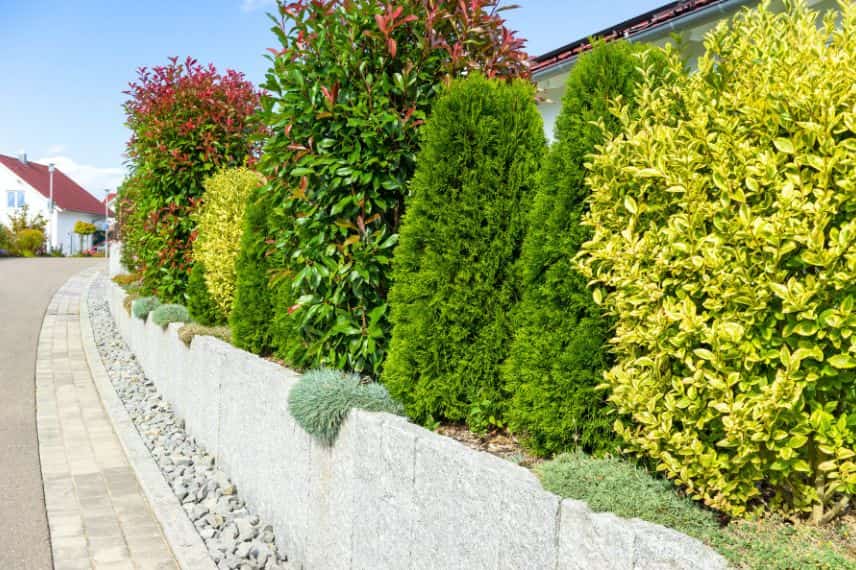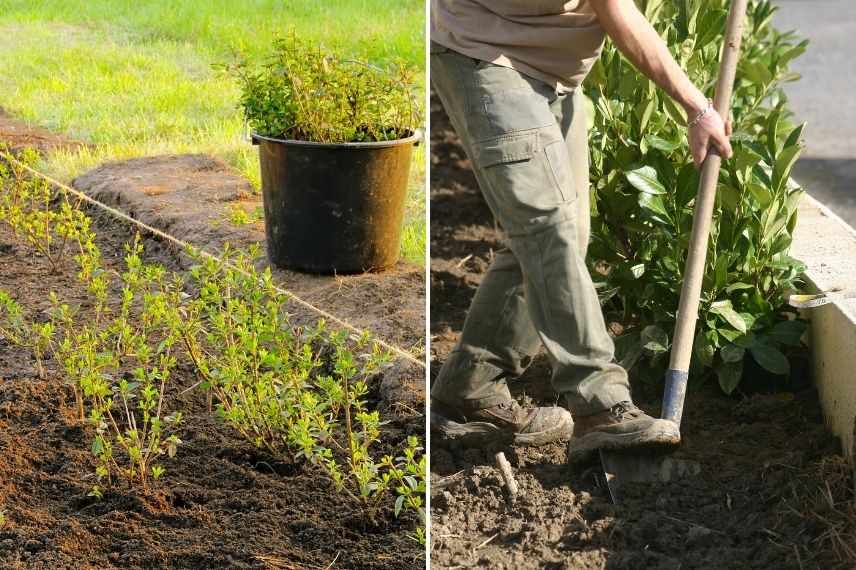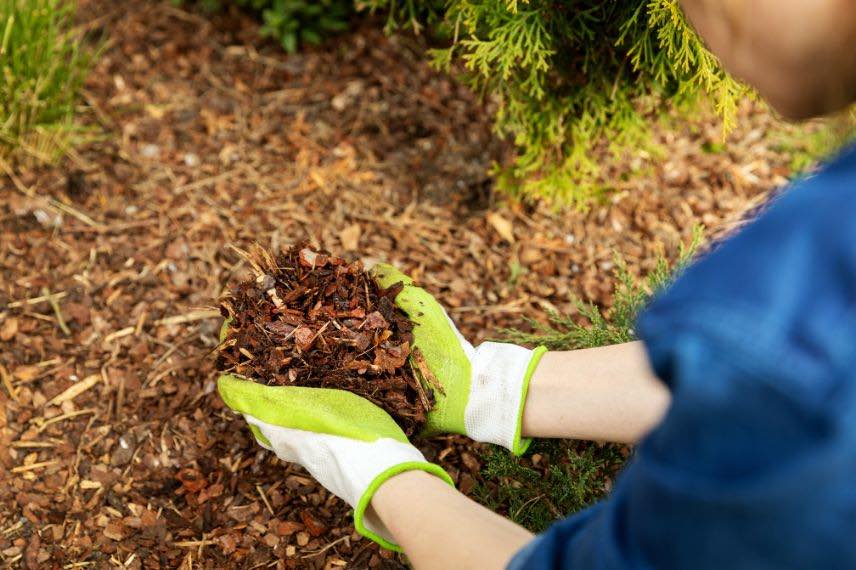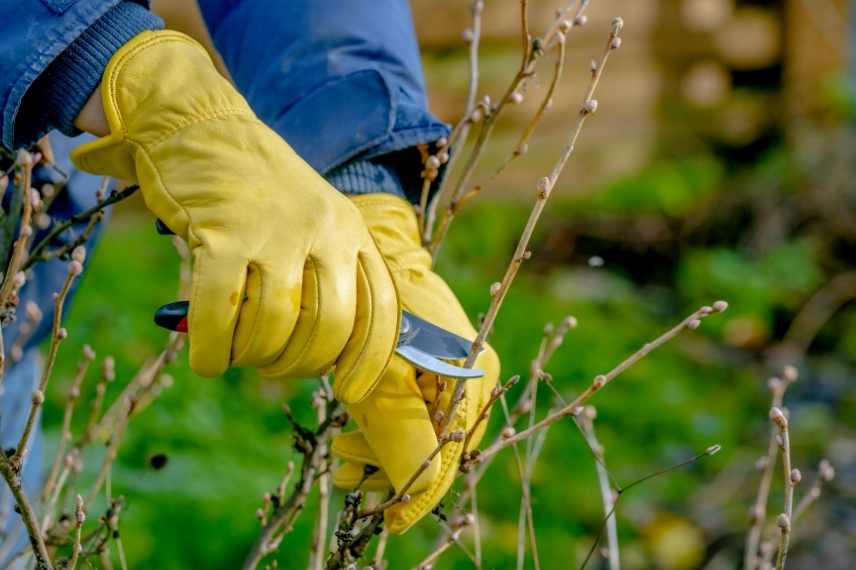
How to Naturally Boost the Growth of a Hedge?
Our tips and tricks to boost your hedge
Contents
Planting a hedge requires some time, as nature has its own pace. However, whether it’s for a bit of privacy, creating a windbreak or a screen, or simply adding a touch of greenery around your property, we’d all like to see this hedge grow faster. While miracles are rare in the garden, you can certainly give your bushes a serious helping hand to achieve a dense, lush green wall in a shorter time.
Discover our tips and tricks to make your hedge grow faster, from choosing the right bushes to preparing the soil, as well as fertilising, watering, and pruning. And you’ll (almost) watch your hedge grow and thicken before your very eyes.
Choosing the Right Bushes for a Quick and Dense Hedge
This paragraph may seem obvious, but it’s always worth reminding that to achieve a sufficiently dense and tall hedge, you need to choose bushes with rapid growth. Because not all plants grow at the same speed! So, if your goal is a hedge that forms quickly, you should prioritise species known for their accelerated growth. And in this regard, some bushes are true champions in every category.
Thus, privets (Ligustrum) are perfect for creating a fast-growing hedge. They can grow 40 cm in the first year, then shoot up by 50 cm per year thereafter. The photinia, particularly the variety ‘Red Robin’, also stands out for its growth rate, averaging around 50 to 60 cm per year. What’s more, its red young shoots and white flowers enhance its charm. When discussing fast-growing hedges, it’s hard to overlook the Leyland cypress (Cupressocyparis), a true rocket in terms of growth, perfect for a screening hedge. It grows about 50 to 80 cm per year. But in return, you’ll need to prune it regularly to control its growth!
The laurustinus (Viburnum tinus) is also ideal for a rapidly developing hedge, thanks to its dense foliage and growth rate—though slightly slower than the other bushes mentioned above (30 cm per year), it remains steady. We could also mention the Eleagnus with its greyish foliage, the Cotoneaster lacteus, or non-running bamboos.
The key tip is to mix compatible species for more homogeneous growth.
To explore further, check out our articles:
- Evergreen hedge bushes with rapid growth
- Fast-growing hedge: 10 bushes that grow quickly
Preparing the soil for rapid growth of your hedge
Of course, if your hedge is already planted, this paragraph becomes unnecessary. But if you’re about to do so, these tips are essential. Because a fast-growing hedge starts underground. Indeed, a well-prepared and fertile soil allows bushes to develop their root system more easily, quickly and deeply. And consequently, to absorb nutrients and water more readily, and therefore to grow without stress.

Planting in a zigzag pattern in two rows or a single row
If you follow these soil preparation tips, your bushes will certainly have a head start:
- Dig a trench at least 30 cm deep, loosening the soil with a garden fork or a organic fork. This way, the aerated soil will allow better circulation of air and water around the roots.
- Remove weeds and stones carefully.
- Enrich the soil by adding well-rotted compost and decomposed manure. This step is crucial to provide optimal nutrient intake.
- Add sand or gravel, along with compost, in poorly drained, clay-heavy or overly compacted soils.
This fertile soil will not only accelerate bush growth but also strengthen their defences against diseases or parasitic attacks.
Watering, mulching, and fertilising – essential for a fast-growing hedge
The weeks and two years following planting are crucial. The hedge will establish itself gradually, but some maintenance tasks are absolutely essential:
- If you watered your bushes thoroughly during planting, this is not enough. During the first year, and even the second, you must continue these regular and generous waterings, as the slightest sign of water stress can be fatal. Water regularly but not excessively, once a week in large quantities rather than small amounts daily.
- Mulching helps retain moisture and coolness, reducing the need for frequent watering by limiting water evaporation. Don’t hesitate to apply a thick layer of wood chips, straw, dried grass clippings, or dead leaves. Beforehand, it’s essential to remove all adventive plants that compete with the bushes for water and nutrients.

Watering, mulching, and fertilising promote the growth of hedge bushes
- Fertilisation is also important to boost your bushes. Since the goal is to encourage leaf and shoot growth, choose a nitrogen-rich, slow-release fertiliser that works over time. Apply this fertiliser in spring and autumn. Dried blood and ground horn are perfect organic fertilisers to stimulate the growth of a young hedge.
Read also
How to plant a hedge?Moderate pruning to boost the growth of a hedge
To encourage bush growth in a hedge, pruning is essential. While this may seem counterintuitive, pruning helps bushes grow taller and become denser. Regular pruning is key, ideally in spring and summer. But what exactly should you prune and how? First, shorten the young shoots growing horizontally to encourage upward growth. Next, trim the tops of the bushes to promote bushier growth.
After pruning, your hedge may appear less dense—this is normal. Don’t worry, pruning stimulates regrowth and increases branch density. 
Some recommend coppicing in the first or second year after planting. What exactly does this involve? Coppicing means cutting a young plant back to 10 cm above the soil to encourage bushy growth. This technique strengthens the bush and triggers a fuller, more ramified growth from the base. However, it won’t necessarily accelerate growth.
For more information, read our article: Coppicing Trees and Bushes
- Subscribe!
- Contents
































Comments